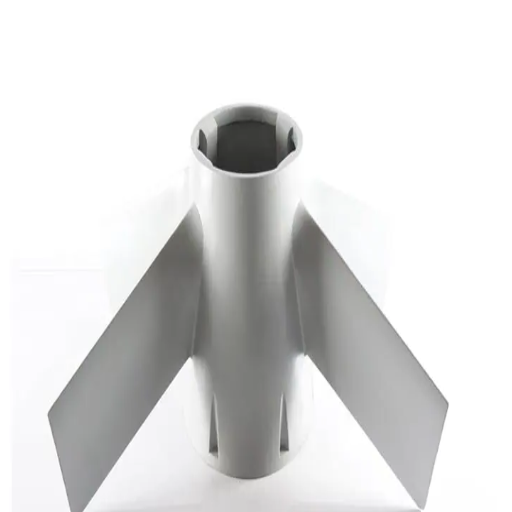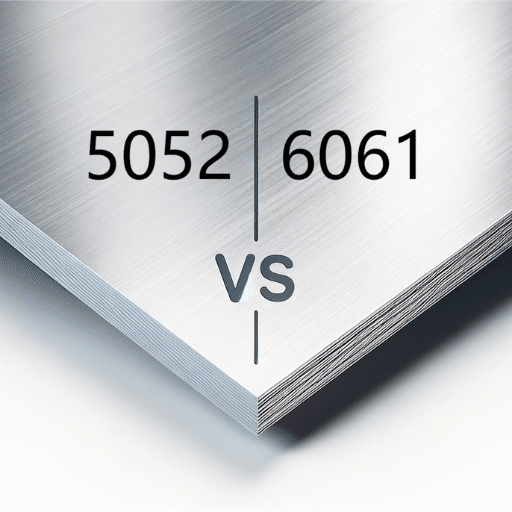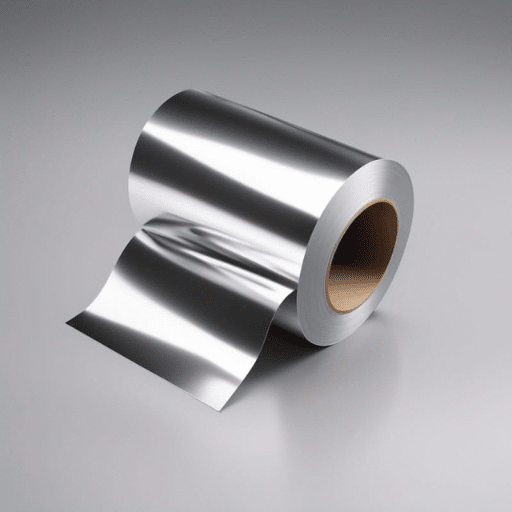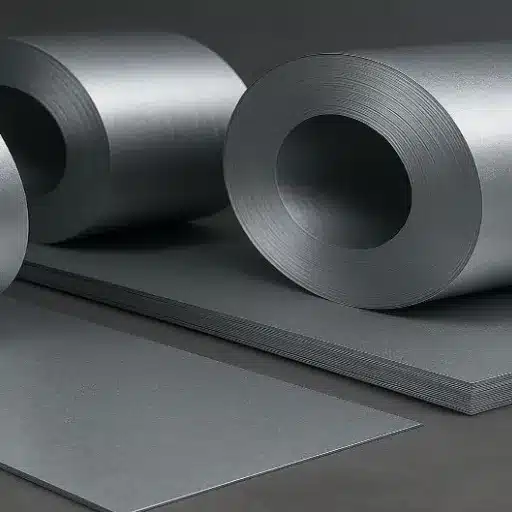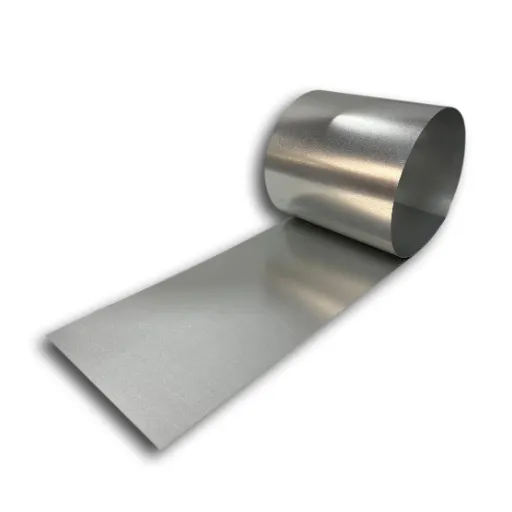High-strength aluminum-alloy castings serve as a critical component in various aerospace, military, and industrial applications due to their unparalleled balance of strength, weight, and corrosion resistance. Among the key standards governing these materials is MIL-A-21180, a specification established to ensure the quality, performance, and consistency of aluminum-alloy castings used in high-stakes environments. This article will provide a detailed examination of MIL-A-21180, breaking down its technical requirements, applications, and the essential role it plays in modern engineering. Whether you are an engineer, procurement specialist, or simply curious about advanced materials, this guide is designed to enhance your understanding of this vital standard and its implications in demanding industries.
Introduction to MIL-A-21180
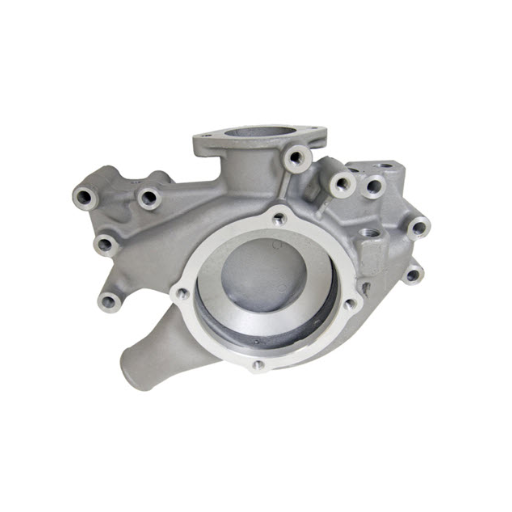
What is MIL-A-21180?
MIL-A-21180 is a military specification that defines the production and performance characteristics of aluminum-alloy castings for use in extremely demanding environments. It prescribes stringent controls over material composition, mechanical properties, and quality assurance so that the castings can endure the operational rigors that may be placed on them. Intended for military and aerospace applications, this specification assures reliability under extreme conditions of high stress, high temperature, or corrosive exposure.
Among the key requirements under MIL-A-21180 are tight controls on alloy composition, which relates to the strength, durability, and corrosion resistance of the material. In addition, the manufacturers must subject the casting to testing standards, including non-destructive inspections such as radiographic testing, to confirm their integrity. Such tests would reveal potential defects, such as porosity or inclusions, that may compromise the performance of the casting in critical applications. Only those castings that pass these stringent tests are considered to comply with the standard.
This specification finds its application mainly where safety and performance are unavoidable criteria for rejection, such as aerospace components, weapons, and other critical military hardware. Being a thorough quality assurance approach, the specification strives to guarantee operational reliability and minimize the risk of failure. Today, MIL-A-21180 continues to set the standard for aluminum castings, with the highest-performance materials custom-made to meet the most demanding specifications.
Relevance of MIL-A-21180 in Various Industries
Due to performance and reliability requirements being non-negotiable across many industries, MIL-A-21180 enjoys great importance. Hence, given the rigorous demands placed on aircraft and spacecrafts, the aerospace industry emphasizes this specification. Aluminum castings fit the bill because of their structural integrity when faced with extreme situations such as high-stress loading and temperature variations. This standard gives engineers and designers a reliable roadmap to producing materials fit to perform under these conditions.
The defense industry is another important area for which MIL-A-21180 holds paramount importance. Weapon systems, vehicles, and other specialized equipment of the military, with safety and functional consistency in focus, must maintain very high standards of quality. Aluminum castings, cast by MIL-A-21180, provide suitable mechanical strength, highest durability, and resistance to the environment, all of which are of paramount importance to mission-grade applications. And as such, MIL-A-21180 is held with utmost respect by the defense manufacturers all over the world.
Last but yet very pertinent, in the weight reduction offensive materials in automotive and energy industrial fields, the standards have become increasingly relevant. In the new age of automotive designs, these castings are used to light-weight the vehicle so that the fuel efficiency can be improved without compromising on safety. On the other side, the Energy sector uses this standard for components that are subjected to high temperatures or corrosive environments, like power generation systems. Across all these industries, MIL-A-21180 remains a benchmark for consistent quality, ensuring that materials fulfill both practical and regulatory requirements.
Overview of Key Applications
With its splendid resilience and performance, MIL-A-21180 is highly coveted across various industries, each leveraging its unique properties to suit common requirements. In aerospace, this military-grade aluminum alloy enters consumer applications, especially aircraft structures, including fuselages and wing components. Its strength-to-weight ratio is so perfect that it decreases the overall mass, thereby allowing for better fuel economy and finer flying characteristics.
The defense sector further trusts MIL-A-21180 for applications needing durability against the harshest of conditions. Whenever armored vehicles, missile airframes, and naval systems implement MIL-A-21180, there will be a need for impact-lightweight construction and the ability to withstand environmental stresses. The alloy can comply with rigorous military standards, which assures that these assets function under high-value risk environments.
The energy sector applies MIL-A-21180 in turbine blades, heat exchangers, and housing components for power plants. The attributes of resistance to high temperatures and corrosion give the alloy long service and less maintenance for downtime. Thus, MIL-A-21180 has come to be considered an indispensable sort of material across technical and industrial fields, for it caters to many challenges of functionality.
Key Features and Specifications
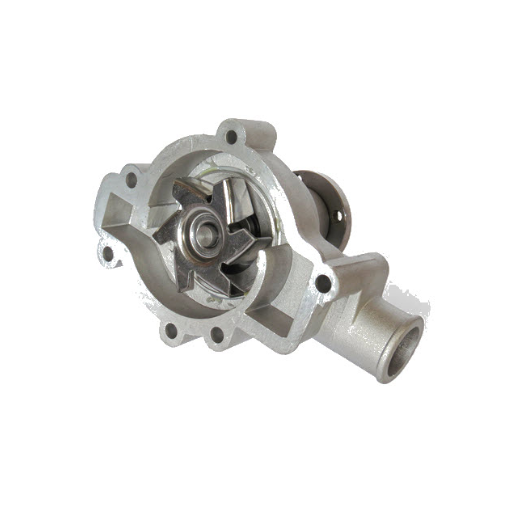
Technical Breakdown of MIL-A-21180
MIL-A-21180 suggests a new grade of aluminum alloy that meets the great demands imposed by industrial and military applications. Thus, it is an alloy of aluminum with controlled trace elements of magnesium, silicon, and zinc to give better mechanical properties and improved resistance to environmental degradation. The tensile strengths in this alloy are significantly high and vary from about 450 MPa up to 520 MPa, depending on heat treatment and processing conditions, thereby making it a classic example of very strong-to-light metals that are applied where high-performance capability without additional weight is required.
The high-performance alloy a thermal environment stands up to thermal stress up to 300°C more or less with little degradation or loss in mechanical integrity. They also deserve oxidation and corrosion resistance due to the formation of very fine oxide films, and can be trusted in chemically aggressive or coastal environments. Depending on the application’s specific requirements, MIL-A-21180 may be anodized using a modern type of anodization to impart the best surface properties and maximize service life.
The excellent machinable properties of MIL-A-21180 enable it to be employed in applications requiring precision machining. The alloy is processable by CNC machining, forging, and additive manufacturing, among others, to provide a structurally sound medium on which complex geometries can be designed. Thermal conductivity turns useful in applications such as heat exchangers for dissipating heat.
MIL-A-21180 being capable of complying with stringent industrial and military standards means its performance and reliability are acutely needed in its bearing. Thorough assessments made of its sphere of applications also show its suitability in high-stress environments such as aerospace fuselage components, offshore drilling platforms, and defense-grade weapons systems. This has continued to maintain its popularity as one of the most widely used alloys in sectors requiring precision-engineered materials with toughness and durability.
Material Composition and Properties
The alloy in question is mainly made of iron, carbon, and a selection of other alloying materials like chromium, nickel, molybdenum, and vanadium, each known in particular for bestowing various mechanical and physical traits to the steel. The exact amount of each in the alloy determines crucial properties like tensile strength, resistance to corrosion, and thermal stability. For instance, chromium content promotes corrosion resistance mainly through the formation of a passive oxide layer, while nickel enhances ductility and toughness, especially at low temperatures. Molybdenum, on the other hand, improves resistance to wear and pitting, so it provides high-temperature strength.
The configuration of the microstructure of a material is the most active agent in governing its behavior. The heat treatment, such as, for example, annealing or quenching and tempering, can vary the grain size and phase distribution within the alloy matrix for desired hardworking strength and ductility for certain applications in the industry. Upon further processing by means of vacuum arc remelting (VAR), one may finally achieve a homogeneous composition and lowered impurity levels, thus ensuring greater reliability for critical applications.
The key characteristics of the material consist mostly of a yield strength in a range of 500-900 MPa, an ultimate tensile strength of more than 1,000 MPa for some grades, and elongation in the range of 10-20% based on the heat treatment applied. Besides, the alloy displays superb resistance to cyclic load, making it suitable for fatigue-critical zones. Thermally stable up to 600°C, the alloy sometimes demands specialized coating or surface treatment whenever extended exposure to extreme conditions is foreseen.
These features make the composition an indispensable material for industries wherein rugged engineering performance is demanded, combined with longevity under harsh work conditions.
Unique Attributes of MIL-A-21180 Standards
The MIL-A-21180 standard is recognized for its exacting specifications, ensuring that materials meet the performance criteria under the severe conditions. Some of the attributes that stand out include hardness and toughness and which are so superior to deformation and wear. These ensure that parts manufactured to this standard can withstand intense mechanical stresses without any loss of integrity. The microstructure of the alloy is such that it retains its mechanical properties for a longer duration, proving further its utility for highly critical applications.
Alongside this, MIL-A-21180 stresses corrosion resistance as well. This is crucial when the environment must be exposed simultaneously to moisture, chemicals, or other corrosive elements. The standard usually allows materials well-suited for such conditions, often enhanced, either with protective coatings or specific alloying additions to virtually prevent deterioration. This, in turn, guarantees long-term operational reliability, even when under the effects of harsh or marine conditions.
For precision and assurances of uniformity, MIL-A-21180 dictates tight tolerance and quality control measures, hence assuring each lot of material produced arrives at the strict chemical and mechanical property requirements stated. Due to these stringent restrictions, the standard is favored by aerospace, defense, and heavy engineering domains, wherein failure is considered impossible. These combine to present reliability, performance, and versatility for use in various other critical industries considered by the standard.
Industry Applications of MIL-A-21180
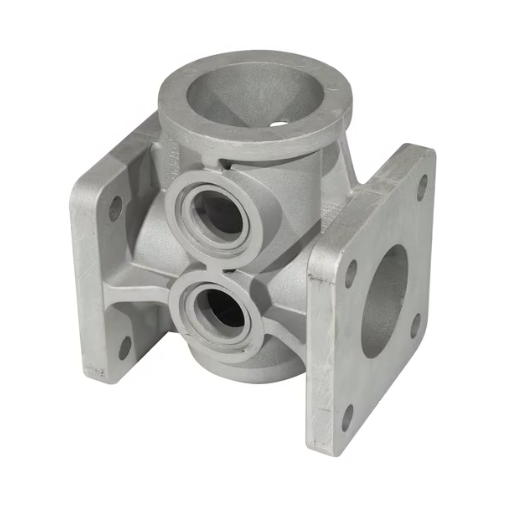
Aerospace Industry Uses
The aerospace industry widely defines and applies MIL-A-21180 because of its commendable material properties, while strict quality control is stringently maintained. Its high tensile strength, combined with good corrosion resistance against a hostile environment, makes it fitting for those parts deemed critical since they are subject to extreme conditions. Also, any class of structures for the aircraft, whose safety is never compromised while in flight, and includes wing spars, fuselage frames, and landing gear components, asks for materials built to this standard. Thus, materials that conform to the MIL-A-21180 standard assure that mechanical stability of a sort unmatched across a diverse array of components, which are consequently able to function well under high stress and variable environmental factors.
Also, aerospace manufacturing ranks high in MIL-A-21180 applications. Since operations inside jet engines expose components such as turbine blades and combustion chambers to extremely high temperatures and very adverse conditions, those components need to be manufactured using materials that meet this standard. Following the stringent qualification protocols ensures a homogeneity of material properties, which sustains the performance and life of these components during aircraft operations. This assurance of dependability becomes fundamental when the slightest failure of a material could lead to a disastrous consequence.
Incorporating MIL-A-21180 materials in aerospace applications goes well beyond mere mechanical performance and onto weight-to-strength ratios. Since the industry is concerned about weight reduction for fuel optimization, these materials from the standard allow engineers to realize designs of components that exhibit the lowest weight possible with utmost durability. This feature is vital in the research and development phase of the new generation of aircraft, both in commercial airliner programs as well as military programs for fighter jets. Therefore, advanced and well-proved MIL-A-21180 materials have been fully cemented into the foremost aerospace material specifications.
Defense Sector Applications
MIL-A-21180 can serve well in the defense sector given its toughness, corrosion resistance, and weight efficiency attributes. These very features are required for the design and manufacture of the next generation of military-grade weapon systems. A few of the major defense applications include:
- Armor Systems: MIL-A-21180 is utilized in building protective armor for military vehicles such as tanks and armored personnel carriers. It resists extreme impact and therefore provides an ideal solution to counter ballistic threats.
- Aircraft Structural Components: The material is carried forward into the building of military aircraft such as fighter jets, reconnaissance planes, and UAVs, given the perfect balance it has of being light and yet maintaining structural integrity and strength for carrying out its operational duties.
- Naval Vessel Construction: MIL-A-21180 gets selected for the manufacturing of hulls, bulkheads, and deck components of naval ships and submarines because of its corrosion resistance in salt water, which is very important for its durability under open sea conditions.
- Missile and Rocket Casings: The material is extensively used in missile and rocket casings owing to its thermal stability and strength, which help it to bear severe forces and temperatures during launch and in flight.
- Weapons and Artillery Systems: MIL-A-21180 is also used for manufacturing components of state-of-the-art weapons systems, such as barrels for howitzers and mounts for machine guns, gaining benefits of one’s performance under great mechanical stresses and in extreme operating environments.
The application here speaks to the versatility of MIL-A-21180 and its importance in ensuring the ruggedness and operability of defense technologies that span land, air, and sea.
Manufacturing and Beyond
The manufacturing processes for components involving MIL-A-21180 focus on precision engineering and advanced metallurgical methods. Having excellent mechanical properties-higher yield strength and resistance to thermal fatigue-this material is mostly CNC-machined-turned, milled, or ground, to meet the bitterly strict defense application dimensional tolerances. In enhancements of hardening and tempering, the heat treatment makes buildings stronger, so as to survive immense wear and immense environmental conditions over millions of years. Such profuse manufacturing care optimizes the performance of the material and enhances the lifespan of crucial defense components.
This further extends the manufacturability of MIL-A-21180 within complex military platforms. For instance, the incorporation of naval applications ought to address the operation in high salinity environments, while, on the other side of the spectrum, aerospace uses advanced coatings and finishes to counter atmospheric corrosion. The compatibility of surface processes such as anodizing or Chemical Vapor Deposition (CVD) continues to broaden the range of industries for this material. Furthermore, MIL-A-21180 would provide excellent weldability among controlled weld conditions; thus, it can be welded into assemblies without reducing or compromising the structural integrity or performance requirements.
The versatility of MIL-A-21180 is not confined to just the defense industry. Recent data and research have indicated its potential in neighboring fields: renewable energy and heavy industrial machinery, where materials are required to undergo high-stress cycles or corrosive environments. Engineers and scientists continue to look at novel approaches for enhancing the capabilities of the alloy by designing hybrids that combine MIL-A-21180 with advanced composites for weight-to-strength optimization. This is an example of how the hallmark of defense-grade engineering is opening the path for technologically advanced applications across other industries.
Compliance and Certification Requirements
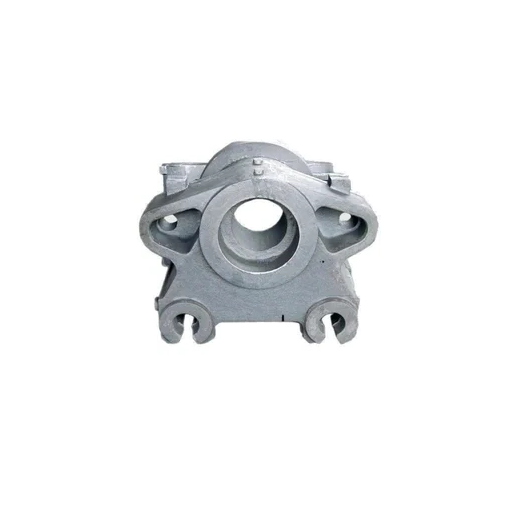
Steps to Achieve Compliance with MIL-A-21180
- Understand the Material Specifications: Begin with a thorough study of MIL-A-21180 specification documentation. Nationwide understanding of all mechanical, chemical, and thermal properties is essential, including areas such as tensile strength, corrosion resistance, and operational temperature. Obtain the most current specifications so that outdated methods leading to compliance failures during inspection are never used.
- Material Sourcing and Verification: Materials should be obtained only from certified suppliers who can provide documented proof of compliance with MIL-A-21180 standards. Also, acquire material certifications that attest that the material meets the stipulated grades and properties. Incoming goods inspection may be carried out, like spectrographic analysis and hardness testing, to verify alignment with the prerequisite stipulation of the standard.
- Manufacture Conforming to Process Considerations: Manufacturing must be done within the dimensions of mechanical and thermal limitations considered in MIL-A-21180. For instance, welding and machining, and heat-treating procedures must lie within methods that conserve material integrity. Since production, it has been identified that advanced metallurgical testing, such as X-ray diffraction or ultrasonic-type inspections, should be carried out to identify any microstructural variations that may compromise the integrity of the material.
- Environmental Testing and Validation: Expose the test materials and finished products to harsh simulated operational environments, including stresses, extreme temperatures, and corrosive attacks, thus making certain that all environmental and durability requirements are met. Such tests should be aligned with defense-grade standards, for instance, salt spray tests (ASTM B117) for corrosion resistance.
- Data and Traceability: All records related to production and processes must be documented alongside reports on testing, results, and corrective actions. Record keeping in an electronic database based on batch data should be done to guarantee traceability during audits. Such documentation would be useful for regulatory scrutiny and as a method to reduce the risks of future non-compliance issues.
- Third-Party Certification: Third-party certification and testing bodies conducting independent audits must ensure the conformity of the final product with MIL-A-21180. It assures credibility and ensures downline compliance with defense-related procurement requirements. Organizations approved by other bodies, such as NADCAP (National Aerospace and Defense Contractors Accreditation Program), can be given preference.
By strictly adhering to these steps, one can reduce the risk of non-compliances while increasing product reliability under the MIL-A-21180 certification in critical defense applications.
Common Challenges in Certification
Achieving certification to MIL-A-21180 standards and those of similarly exacting specifications often entails overcoming a plethora of challenges. Among them is the stringent interpretation of material and performance specifications that require absolute correlation between engineering designs, manufacturing thereof, and the final sourcing of materials. Even the minutest of deviations can delay issuance or outright refusal by the audit.
In addition to the above, the standards themselves pose greater difficulty due to their frequent and complex revisions. Before the organization can comply with the standards, it must constantly keep abreast and watch for changes concerning the same, which sometimes means great resources are spent on training, updating their internal processes, and recalibrating their machinery. Differing interpretations of the standards requirements proposed by the certification bodies or auditors add to this problem, which consequently calls for immaculate documentation and clear, active communication with the certifying authority.
The second big issue remains achieving unwavering quality across all lots undergoing accreditation through NADCAP or any of its aggregated programs for manufacturers. Meeting the stringent inspection and testing standards demands a quality control system that can monitor data and trigger improvements autonomously.
Finally, organizations pursuing compliance need to deal with varying compliance levels in different jurisdictions, thereby complicating the matter with the differences in enforcement and logistical hassle affecting supply chains and maintenance. Going for a strategic, data-driven certification methodology to address these challenges not only ensures that the organization passes all requisite standards but also leverages them as a stepping stone to become a competitive force in the defense and aerospace sector.
Benefits of Using MIL-A-21180 Compliant Materials
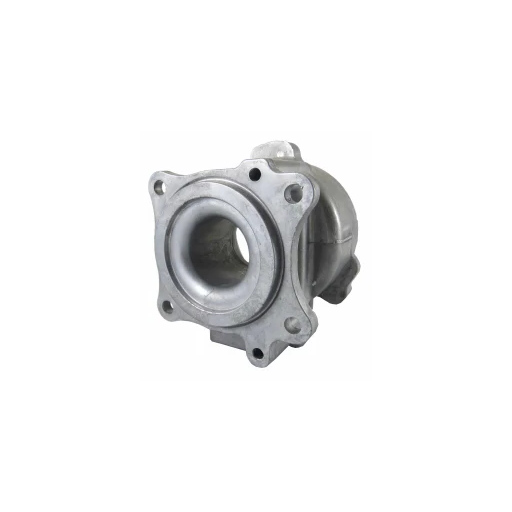
Quality and Durability Advantages
The use of MIL-A-21180 compliant materials offers several key benefits that enhance quality and durability in critical applications. These materials are custom-formulated and rigorously tested to meet the demanding requirements of the defense and aerospace industry. Some of the benefits are the following:
- Corrosion Resistance: These MIL-A-21180 compliant materials give excellent maintenance against oxidation and chemical degradation, thereby maintaining performance over the long term in adverse conditions like saltwater, high humidity, industrial pollution, and various corrosive environments.
- Structural Integrity: These materials offer high tensile and yield strength levels and, thus, can resist mechanical aggression and stress without failure. Their load-bearing capacity makes them suitable for loads to which mission-critical components must be subjected.
- Thermal Stability: The materials under consideration maintain their mechanical properties over a broad temperature range and thus act effectively under both extreme cold and high-heat conditions. MIL-A-21180 materials are tested for thermal performance as required by operation.
- Non-Magnetic: We can sometimes expect non-magnetic attributes. This ensures that they will never interfere with sensitive electronic apparatus or magnetic detection technologies, an important aspect of space-age aerospace and defense systems.
- Durability and Lifecycle Cost Efficiency: High durability leads to lower incidences of replacement or repair, minimizing long-term operational costs. Due to MIL-A-21180 standard compliance, the materials meet extended lifetime requirements that ensure reduced downtime and mission readiness.
Through these features, manufacturers and contractors are assured of reliable performance beyond expectations under the hardest operational conditions.
Cost-Efficiency and Reliability
Cost efficiency and reliability are the main parameters on which the value and performance of systems for industrial or operational use are evaluated. Advanced manufacturing techniques and standards like MIL-A-21180 offer economic feasibility for the system by providing a longer lifecycle for the components. These materials are especially developed to operate in very harsh environments with wear-and-tear being kept to an absolute minimum over a very long period of time, thereby lessening maintenance or replacement activities.
An in-depth analysis of lifecycle costs indicates that the initial capital expenses pertaining to durable materials will mostly be compensated downstream. The less maintenance these products require, the less the labor cost will be, and the least will be the procurement of spare parts will be through the system’s operational life. Besides that, good structural integrity in such harsh environments implies that these components prevent structural failures, thereby reducing unplanned outages. Such cases are very pertinent when considered for compelling contexts such as aerospace, military, or marine, where reliability is directly related to application success and hence safety.
Reliability also allows the indirect capabilities of enhancing cost-efficiency by improving the overall performance. When a system runs continuously and predictably without interruptions, it generates increased productivity, resources are optimized, and contingency measures become unnecessary. For example, independent performance assessments have shown that systems constructed with advanced-grade materials exhibited greater Mean Time Between Failures (MTBF), validating their reliability. The cost incurred in advanced materials and engineering translates into a balanced net value vis-a-vis upfront costs and operational savings, thus yielding the ROI.
References
-
Air Force Institute of Technology (AFIT) – Examining the Return on Investment of Test and Evaluation
This source discusses the application of MIL-A-21180 in aerospace contexts, including casting grades and classifications. -
University of North Florida – The Relationship Between High-Cycle Fatigue and Tensile Properties in Cast Aluminum Alloys
This paper explores the tensile properties and fatigue life specifications of aluminum alloys, referencing MIL-A-21180. -
Pascal and Francis Database – Dendrite Arm Spacing (DAS) in Aluminum Alloy Castings
This study evaluates tensile properties of aluminum alloys, including those specified in MIL-A-21180.
Frequently Asked Questions (FAQ)
Q: What is MIL-A-21180?
A: MIL-A-21180 is a specification that covers the requirements for high-strength aluminum-alloy castings used in various applications. This document outlines the mechanical properties, inspection classes, and radiographic quality grades necessary to ensure the integrity and performance of these castings.
Q: What are the mechanical properties of high-strength aluminum-alloy castings as per MIL-A-21180?
A: The specification details six classes of mechanical properties, which include tensile strength, yield strength, elongation, and other critical factors that determine the performance of high-strength aluminum-alloy castings across different applications.
Q: How many radiographic quality grades are specified in MIL-A-21180?
A: MIL-A-21180 defines four radiographic quality grades that assess the internal quality of aluminum alloy castings. These grades help ensure that any voids or defects within the material are identified and evaluated.
Q: What are the four inspection classes mentioned in MIL-A-21180?
A: The specification outlines four inspection classes that dictate the extent and methods of inspection required during the fabrication of high-strength aluminum-alloy castings, ensuring compliance with the necessary quality standards.
Q: How does MIL-A-21180 relate to international standards?
A: MIL-A-21180 adheres to international standards by providing a comprehensive framework for the fabrication and inspection of high-strength aluminum-alloy castings, making it applicable for global use in various industries.
Q: What information does MIL-A-21180 provide regarding alloy castings?
A: The document contains detailed information on the properties of high-strength aluminum-alloy castings, including their mechanical properties, fabrication processes, and the necessary inspections to maintain quality and performance.
Q: Can MIL-A-21180 be applied to special applications?
A: Yes, MIL-A-21180 can be applied to special applications where high-strength aluminum-alloy castings are required. The specification ensures that these castings meet the stringent mechanical properties and quality grades necessary for demanding environments.
Q: What should manufacturers consider when using MIL-A-21180?
A: Manufacturers should consider the specific requirements outlined in MIL-A-21180, including the six classes of mechanical properties and the four radiographic quality grades, to ensure that their aluminum-alloy castings meet the necessary standards for performance and reliability.

